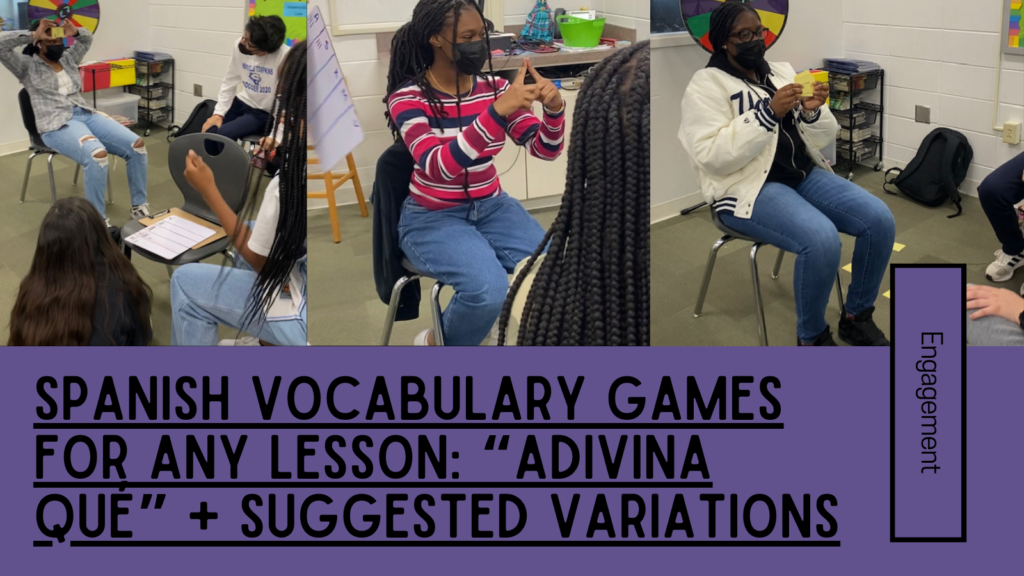I might be a little bit late to these Spanish games for high school, and I am pretty sure I am not the only one who has thought about it.
However, the way I played it in class successfully simply came to me between the last days of Spanish class in December and this first week of Spanish classes.
I like to give credit where due so I believe it was a compilation from tons of things and ideas I have learned from La Maestra Loca, Claudia Elliott, and Meredith White over the years, among many others, that beautifully came together to form these new game variations.
So here is my version of a language game that is super popular among our youth that will totally bring joy to your classroom. The best part is that the prep is minimum! It is one of these super low prep Spanish games for high school!!!
This week, it brought so much joy and engagement to mine, so I wanted to write about it because I know it can do the same for you too.
We all need those low prep success moments that are conducive to acquisition now more than ever, so here we go!
The Game:
Last December on the last day of school, I noticed my students could go for hours playing the popular game by Ellen DeGeneres Heads Up! I was just blown away by the level of engagement and I even joined a couple of rounds with them (I lost miserably, btw) but really treasure those moments with each one of them.
Over the break, I started thinking…”How can I bring this same game to my classroom while keeping it low prep?” So, this is how I it all began recently with much success.
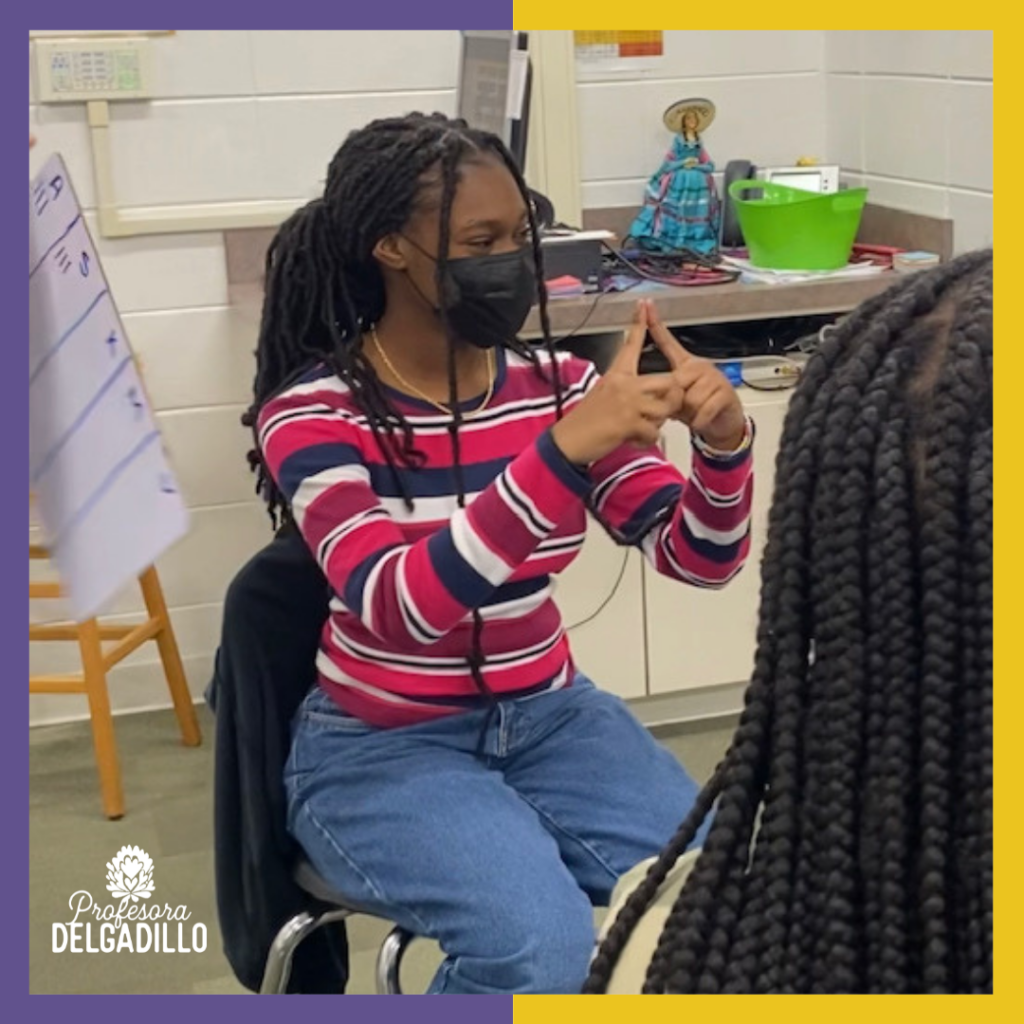
Advantages of these kind of Spanish Games For High School:
- You don’t have to spend any money on this game!
- It is as low prep as you want to make it!
- It builds community beutifully
- It is conducive to acquisition of the language (not all Spanish games for high school are!)
- It can potentially build on circumlocution skills depending on the variation
- It supports social emotional skills (interpersonal & community)
- It can last for as long as you want it to!
Step 1 – Preparation for Spanish Games. What You Will Need to Set It Up!
You don’t have to make pretty slides unless you want to because honestly, who the heck has time to create pretty slides nowadays ?
I have come to a point where I am totally unapologetic about my imperfections and shortcomings as a teacher. I do my best everyday with the mental energy I can sustain daily and I know you do too.
Now, This doesn’t mean I allow mediocrity to creep in or that I am not working on my flaws, but I am much kinder to myself than what I used to be. It is all thanks to the lessons taught by pandemic induced generalized anxiety disorder!
Back to what you will need to set up the game. You have two options:
- A) Write several vocabulary words or target phrases on the board.
OR
- B) Set up your words on a Google slide like the ones pictured below.
Suggestions: We don’t want to overwhelm our learners with too many new words, so pick 8-10 new words and allow the remaining words to be words they are already familiar with. I try to not exceed 20 words total. Again, half of them being new words and the other half being recycled vocab and/or phrases.
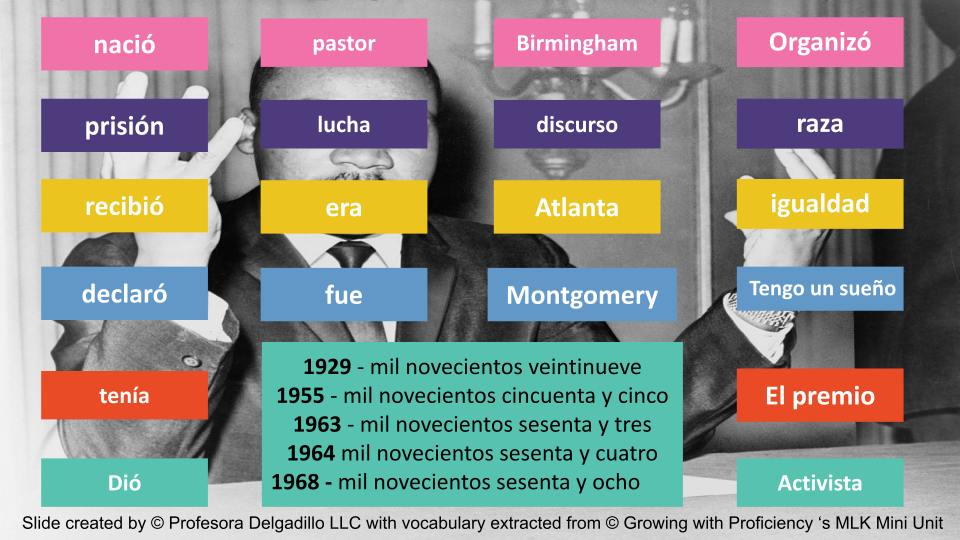
Step Two – Vocabulary for Spanish Games. TPR the Words for your Students and Play La Maestra Dice
Once we have the words either written on the teacher dry erase board or projected in a slide. Then, we play LA MAESTRA DICE (a game I learned from Annabelle Williamson aka La Maestra Loca) with the words.
You can also see an example of how I establish gestures and meaning with the class for new targeted vocabulary.
In the video below, I have already showed them how to do each gesture for each word and I am checking comprehension using La Maestra Dice.
Step 3 – Make Groups for the Spanish Game!
For me and most of my teacher friends, our magic number is three, but sometimes in some classes, they can handle 4-5 people per group. This will be up to you.
So you will group your students into small groups of a number that makes you happy.
Students will then be instructed to move closer to their group members.
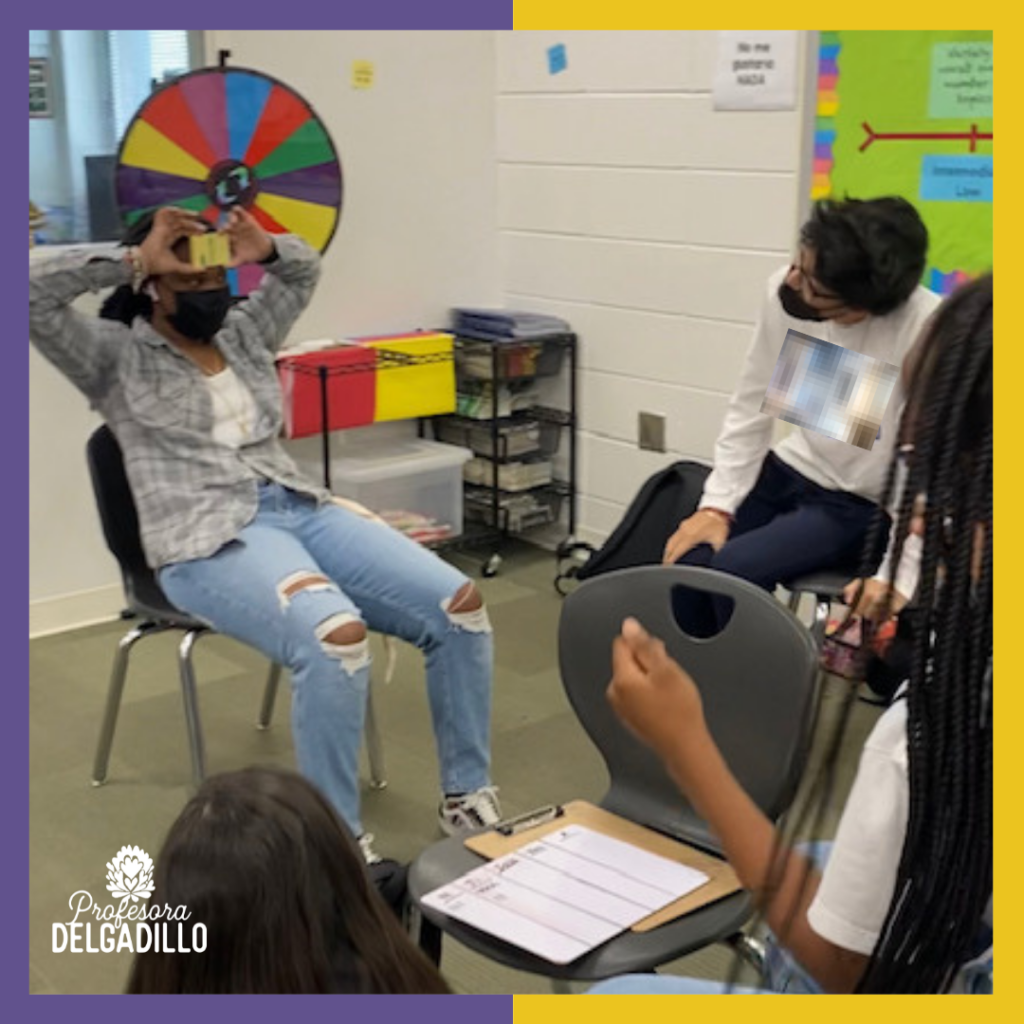
Step 4 – Have Your Groups Prepare the “Adivina Que” Cards
Now, it is the time to pass out small index cards to each group.
If you are have 16 words on the board, then you need to pass a total of 16 cards per group.
Each group is responsible for creating a set of cards with the words as large as possible and written in Spanish only.
Suggestion: You can also create the cards ahead of time in a word processor such as Google Docs or Word to save class time, but I rather let them create the cards to save me time.
Once each group has a complete card set, they will shuffle their card stack.
Step 5 – Project Instructions and Words for the entire Class
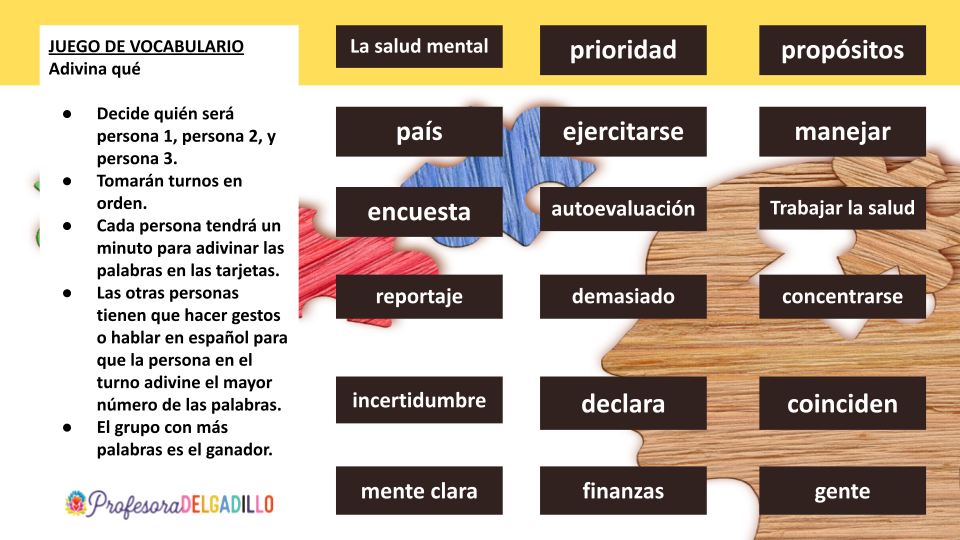
The picture above is from a unit I created for my AP students to talk about mental health.
These are the instructions I gave them. These Spanish games for high school are quite versatile. I also played the same game with level 2s succesfully with the following verbal modeling and instructions
- Each student per group will become Student 1, Students 2, and Student 3. (S4 and S5 if you have larger groups).
- Each student will have a turn sitting while facing the projector/ board with key terms for support. This student facing the projector/board will have the cards stacks close to their forhead (heads up style) and will have one minute to try to guess as many words as possible while the other group members gesture only and/or use only the target language to try to help the teammate to guess as many words as possible during that one minute without saying the actual word. They can come up with their own gestures and not only stick to the ones you gave them.
- I usually keep the time for all groups at once so we can move along at the same speed, but you could also give them more freedom and allow each group to be their own time keeper.
- Students will take turns recording how many words each member of the team was able to guess.
- You can also assign one student per group to video each group round for fun and then air drop you the videos for future class memories.
It will all go something like this:https://youtu.be/x4Gv1hNAqgg
Step 6 – So…What Now?
The game can end here praising and celebrating each group and each winner.
OR you can add the following variations:
- Select the member of each group that had the most points and host a class championship with these players.
- With this option, each group willl gesture to support their own champion.
- Tally and add the points by each champion as bonus points to each team and the team with the highest number of points gets the trophy/candy/test points/ praise/ whatever you decide.
AND/OR
- You, the teacher can play, while the entire class gestures to see if you can beat the highest scoring student.
I usually play this high engagement Spanish vocabulary game for a solid 25 minuets without getting dry or boring. We had a blast last week!
I know you will too!
If you happen to play and enjoy it with your learners, tag me on social media TWITTER, INSTAGRAM, or FACEBOOK to let me know how it goes!!!
It always brings me joy to spread the joy!
Se despide, tu amiga, the one imperfect Spanish teacher, profesora Delgadillo. Until next time.

